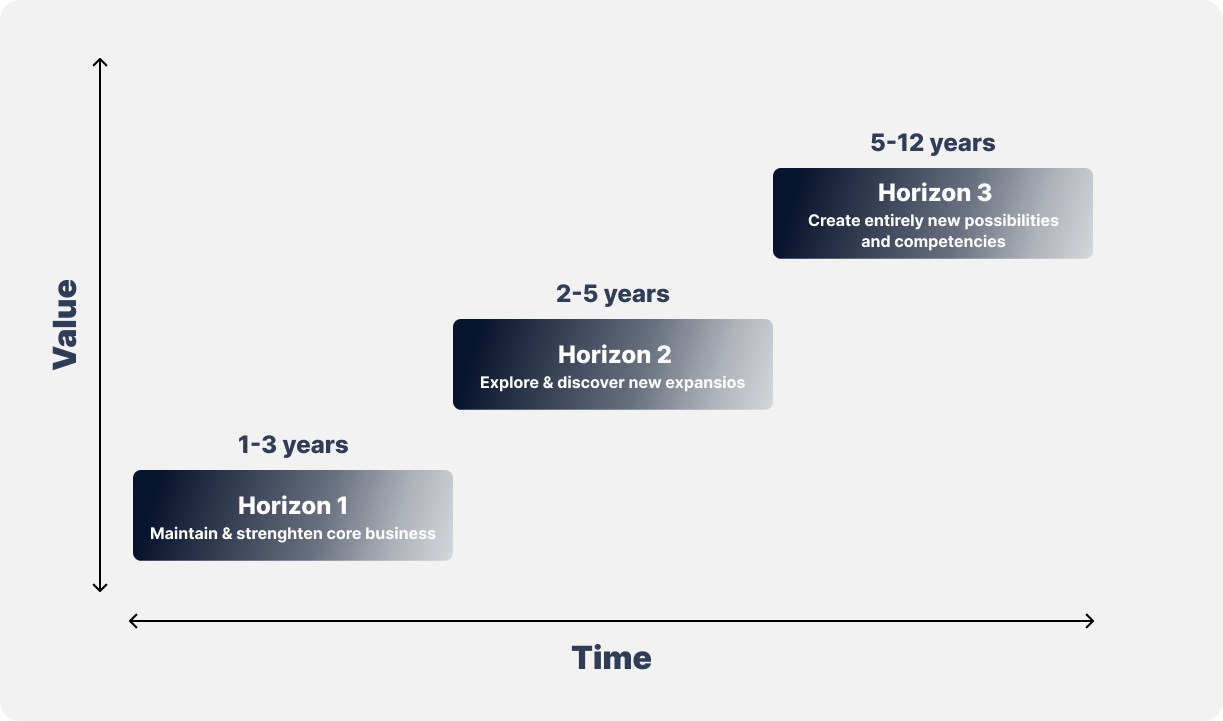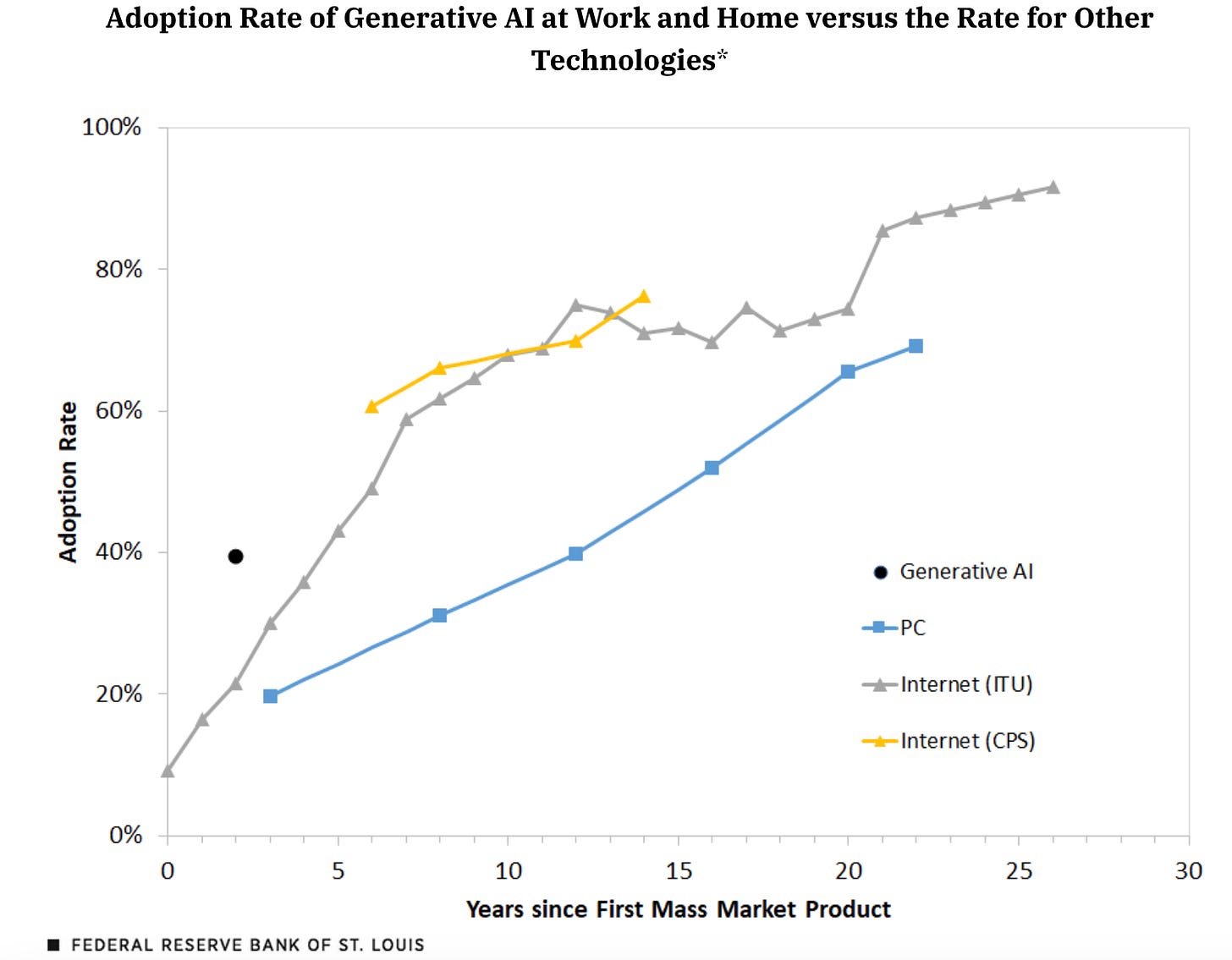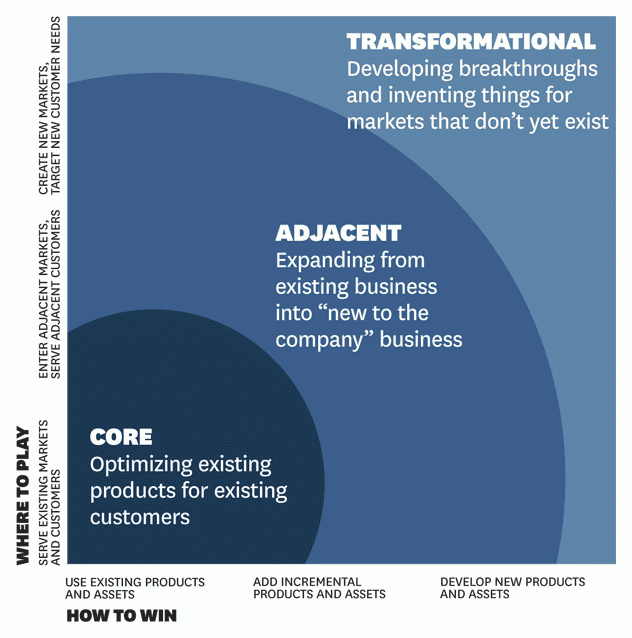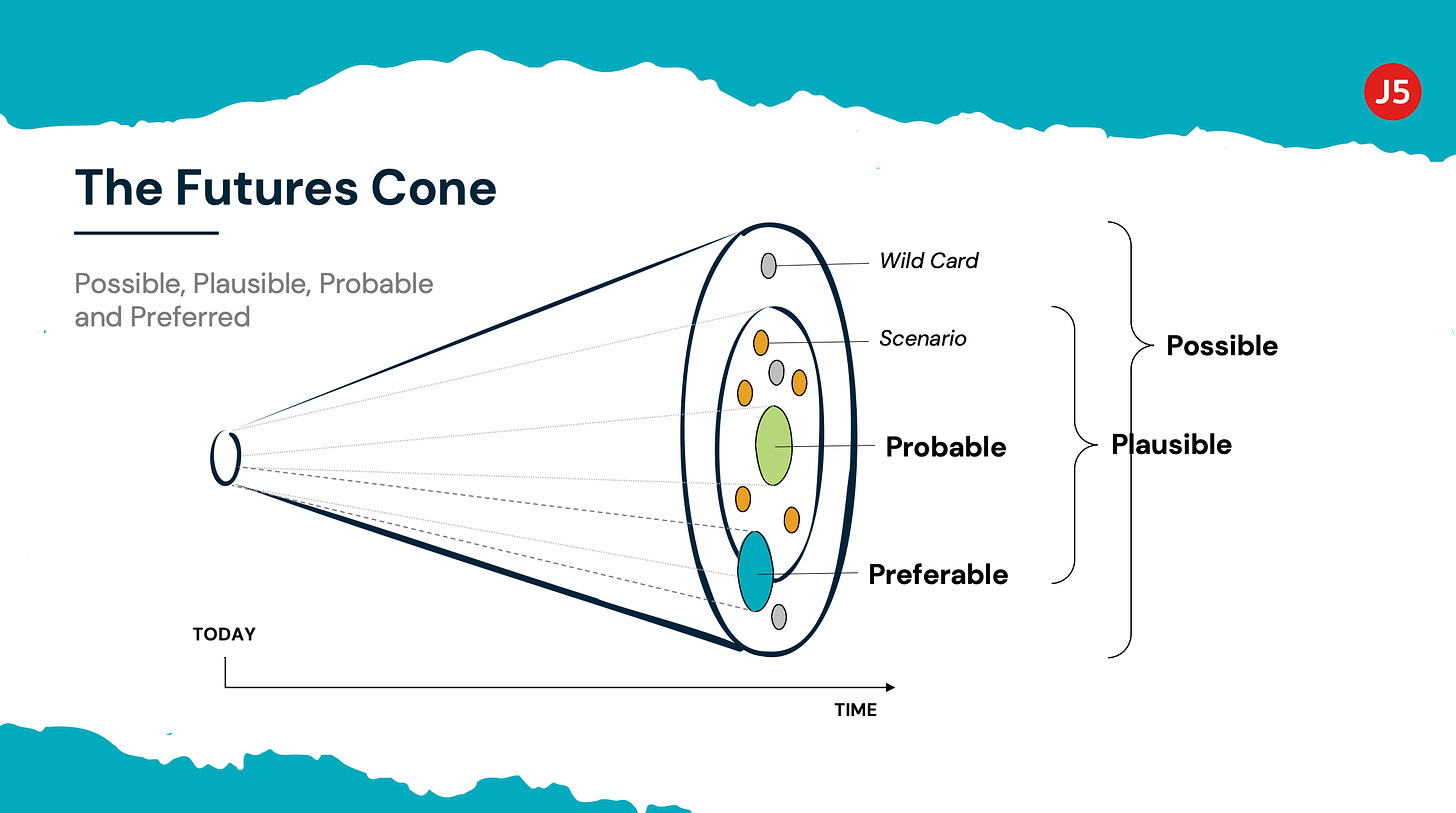Venturing Insights #21 - Rethinking the Three Horizons Model: From long-term strategy to agile innovation
Why companies must move faster to stay ahead in today’s disruption-driven world.
The Three Horizons Model, introduced by McKinsey, has long been a go-to framework for businesses to balance short-term needs while preparing for long-term growth. It divides innovation across three key timeframes:
• Horizon 1: Focuses on optimizing and improving the current business model.
• Horizon 2: Seeks to expand the core business into new markets or customer segments.
• Horizon 3: Embraces disruptive innovations that create new capabilities or business models.
The model was designed to give businesses a way to visualize being ambidextrous—running their existing operations while simultaneously creating new capabilities for the future. However, in today’s hyper-competitive market, innovation cycles have shortened dramatically. Technologies that once took years to emerge, like AI, are now reshaping industries in months.
The Disruption Challenge
Here’s the irony: market leaders are rarely the ones driving Horizon 3 disruption. Instead, it’s often the challengers and new entrants—startups or smaller companies—that introduce disruptive innovations. These new players have a key advantage: no legacy systems or cumbersome processes to maintain. Their singular focus on disruption allows them to move faster than incumbents.
Take Uber, for instance. Uber didn’t invent smartphones or GPS, but it used these existing technologies to create a gig economy that disrupted the taxi industry. Similarly, Tesla revolutionized electric vehicles, not by inventing batteries but by rethinking the business model around energy storage and sustainable transportation .
Why It’s Time for a Change
The problem with the Three Horizons framework today is that it assumes sequential progress—that you can focus on Horizon 1 before moving to Horizon 2, and so on. But with today’s rapid innovation cycles, companies can’t afford to wait. Disruptive innovations that used to take five or ten years to materialize can now happen in months.
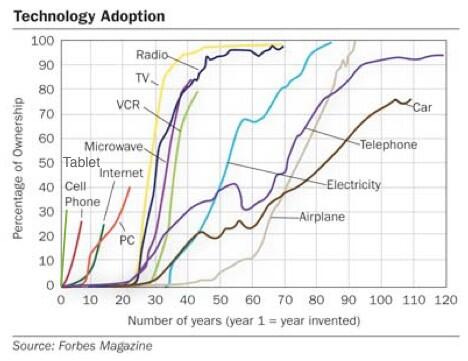
To stay competitive, companies need to work on all three horizons simultaneously. They can’t wait for Horizon 1 to max out before investing in Horizon 3. The new rule of the game? Agility, not just long-term planning, is key.
A New Approach: Short Cycles, Quick Pivots
So, how do we adapt? It’s time to blend the best parts of the Three Horizons Model with agile innovation frameworks. The revamped model should encourage even more parallel innovation efforts.
For incumbents, there are four ways to counter rapid disruption:
1. Incentivize Open Innovation: Large organizations can use partnerships, clienting, investments, platforms business models, or prize challenges to harness startups’ speed. NASA’s partnership with SpaceX and Apple’s App Store are great examples of this approach .
2. Acquire external innovators: This strategy combines existing company strengths with external innovation, as Google did with Android. However, the risk lies in cultural mismatches, which can stifle innovation if not managed well .
3. Copy the disruptors: Microsoft famously copied Netscape’s browser to dominate the web, while Google adapted Overture’s pay-per-click model. The risk is copying without truly understanding the market problem, which can lead to missing the target .
4. Out-innovate the disruptors: Though difficult for incumbents burdened by legacy systems, companies like Apple with the iPhone and Amazon with AWS show that it’s possible to out-innovate competitors .
Another Trap of the Three Horizons Model
Despite its usefulness for prioritizing innovation, the Three Horizons Model has a significant flaw: it doesn’t address the type of innovation being pursued. The model is focused on timing, not on whether the innovation is incremental or truly disruptive. This leads to confusion, particularly when companies try to merge the Three Horizons framework with other models like the Ambition Matrix, which maps different types of innovation based on strategic intent.
The Ambition Matrix, developed by Bansi Nagji and Geoff Tuff, helps businesses understand if they’re pursuing core, adjacent, or disruptive innovation. While combining the Ambition Matrix with the Three Horizons Model can help clarify innovation strategies, it can also lead to misalignment because the two models are meant for different purposes.
Strategic Foresight
If the Three Horizons Model feels a bit rigid for today’s pace, there’s a way to enhance it. Combining it with other tools like Strategic Foresight and Time Cones could give companies a more complete approach.
Strategic Foresight helps anticipate and prepare for future challenges. While the Three Horizons offer a structured timeline for innovation, foresight takes a broader view, looking at external trends like technological disruptions or societal shifts that could impact those timelines. By bringing foresight into the mix, companies can continuously adjust their Horizon 3 plans to reflect emerging trends, staying agile and adaptable long before disruption hits.
Conclusion: Real-Time Innovation
The Three Horizons Model still has value, but it needs to be updated for real-time innovation. In today’s fast-moving world, companies need to act across all horizons at once, with agility and speed as their core strengths. The future belongs to those who can innovate dynamically across all timeframes, without being locked into the rigid structures of the past.
Keep innovating,
Davide
A soundtrack for you:





